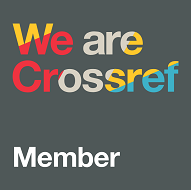Warm Teachers Make Enthusiastic Students: How Teachers Build Positive Relationships With Students
Abstract
In addition to their teaching responsibilities, teachers must possess social competence, particularly in interacting effectively with their students. Previous research highlights a significant correlation between the quality of teacher-student relationships and the level of conflict within the classroom. Therefore, teacher competence in fostering positive relationships with students is essential for creating an environment of positive discipline. This research aims to enhance teachers' understanding of the fundamental principles of positive relationships through a training program titled "Warm Teachers Make Enthusiastic Students." The findings demonstrate an improvement in teachers' knowledge concerning the foundational principles of positive relationships, including encouragement, a focus on solutions, and a balanced approach of kindness and firmness. However, there was no observed increase in knowledge about the importance of caring among the teachers. The study also includes a qualitative analysis of teacher behaviors during the training sessions. It provides insights into how teachers applied the principles discussed and their overall engagement with the training material. This analysis underscores the significance of continuous professional development in the social competence of teachers, which is vital for fostering a supportive and productive classroom environment
Keywords
Full Text:
PDFReferences
About positive discipline. (2021, March 14). Dr. Jane Nelsen. https://www.positivediscipline.com/about-positive-discipline
Azman, A. N., & Johari, M. (2022). Investigating The Effectiveness of Videos Designed Using Cognitive Load Theory on Biology Students’s Academic Achievement. Jurnal Pendidikan IPA Indonesia, 11(3), 461–468. https://doi.org/10.15294/¬jpii.¬v11-i3.¬37324
Bieg, S., Dresel, M., Goetz, T., & Nett, U. E. (2022). Teachers’ enthusiasm, humor, and its’ lagged relationships with students’ enjoyment and boredom - A latent trait-state-approach. Learning and Instruction, 81. https://doi.org/10.1016/-j.learnin¬struc.¬¬2021.101579
Burić, I., & Wang, H. (2024). Relationships among teacher enjoyment, emotional labor, and perceived student engagement: A daily diary approach. Journal of School Psychology, 103. https://doi.org/10.1016/¬j.jsp.2023.101271
Costley, J., Fanguy, M., Lange, C., & Baldwin, M. (2021). The effects of video lecture viewing strategies on cognitive load. Journal of Computing in Higher Education, 33(1), 19–38. https://doi.org/10.1007/-s12528-020-09254-y
Eddy, C. L., Huang, F. L., Prewett, S. L., Herman, K. C., Hrabal, K. M., de Marchena, S. L., & Reinke, W. M. (2024). Positive student-teacher relationships and exclusionary discipline practices. Journal of School Psychology, 105. https://doi.org/10.1016/j.jsp.¬2024.¬10¬1314
Falcon, S., Admiraal, W., & Leon, J. (2023). Teachers’ engaging messages and the relationship with students’ performance and teachers’ enthusiasm. Learning and Instruction, 86. https://doi.org/10.1016/¬j.learnin¬struc.-2023.101750
Hasty, L. M., Quintero, M., Li, T., Song, S., & Wang, Z. (2023). The longitudinal associations among student externalizing behaviors, teacher-student relationships, and classroom engagement. Journal of School Psychology, 100. https://doi.org/10.-1016/j.jsp.¬2023.¬10¬1242
Keller, M., Neumann, K., & Fischer, H. E. (2013). Teacher enthusiasm and student learning. In J. Hattie & E. M. Anderman (Eds.), International guide to student achievement (pp. 247–249). Routledge/Taylor & Francis Group.
Kirkpatrick, D. L., & Kirkpatrick, J. D. (2006). Evaluating training programs: The four levels (3rd ed.). Berrett-Koehler.
Kolb, D. A. (2015). Experiential learning: Experience as the source of learning and development (2nd ed.). Pearson Education, Inc.
Konak, A., Clark, T. K., & Nasereddin, M. (2014). Using Kolb’s Experiential Learning Cycle to improve student learning in virtual computer laboratories. Computers and Education, 72, 11–22. https://doi.org/10.1016/j.compedu.2013.10.013
Kunter, M., Frenzel, A., Nagy, G., Baumert, J., & Pekrun, R. (2011). Teacher enthusiasm: Dimensionality and context specificity. Contemporary Educational Psychology, 36(4), 289–301. https://doi.org/10.1016/¬j.cedpsych.2011.07.001
Li, T., Wang, Z., Merrin, G. J., Wan, S., Bi, K., Quintero, M., & Song, S. (2024). The joint operations of teacher-student and peer relationships on classroom engagement among low-achieving elementary students: A longitudinal multilevel study. Contem¬porary Educational Psychology, 77. https://doi.org/¬10.1016/j.cedpsych.2024.102258
Li, X., Bergin, C., & Olsen, A. A. (2022). Positive teacher-student relationships may lead to better teaching. Learning and Instruction, 80. https://doi.org/10.-10¬16/¬j.learninstruc.2022.101581
Longobardi, C., Ferrigno, S., Gullotta, G., Jungert, T., Thornberg, R., & Marengo, D. (2022). The links between students’ relationships with teachers, likeability among peers, and bullying victimization: the intervening role of teacher responsiveness. European Journal of Psychology of Education, 37(2), 489–506. https://doi.org/10.1007/s10212-021-00535-3
Longobardi, C., Settanni, M., Prino, L. E., Fabris, M. A., & Marengo, D. (2019). Students’ psychological adjustment in normative school transitions from kindergarten to high school: Investigating the role of teacher-student relationship quality. Frontiers in Psychology, 10. https://doi.org/10.3389/¬fpsyg.-2019.¬01238
Marengo, D., Fabris, M. A., Prino, L. E., Settanni, M., & Longobardi, C. (2021). Student-teacher conflict moderates the link between students’ social status in the classroom involvement in bullying behaviors and exposure to peer victimization. Journal of Adolescence, 87, 86–97. https://doi.org/10.1016/¬j.adole¬scence.2021.01.005
Marengo, D., Settanni, M., Prino, L. E., Parada, R. H., & Longobardi, C. (2019). Exploring the dimensional structure of bullying victimization among primary and lower-secondary school students: Is one factor enough, or do we need more? Frontiers in Psychology, 10. https://doi.org/10.3389/fpsyg.2019.00770
Nelsen, J. (2006). Positive discipline (Rev. ed.). Ballantine Books.
Nelsen, J., & Gfroerer. (2017). Positive Discipline Tools for Teachers: Effective Classroom Management for Social, Emotional, and Academic Success. Harmony Books.
Ødegård, M., & Solberg, S. (2024). Identifying teachers’ reactive strategies towards disruptive behavior in classrooms. Teaching and Teacher Education, 145. https://doi.org/10.1016/j.tate.2024.104627
Stemler, S. E., Bebell, D., & Ann Sonnabend, L. (2011). Using school mission statements for reflection and research. Educational Administration Quarterly, 47(2), 383–420. https://doi.org/10.¬1177/¬0013¬161-X¬1¬0¬¬387590
Thornberg, R., Wegmann, B., Wänström, L., Bjereld, Y., & Hong, J. S. (2022). Associations between Student–Teacher Relationship Quality, Class Climate, and Bullying Roles: A Bayesian Multilevel Multinomial Logit Analysis. Victims and Offenders, 17(8), 1196–1223. https://doi.org/-10.1080/¬15564886.¬2022.¬205¬11¬07
Tomczak, M., & Tomczak, E. (2014). The need to report effect size estimates revisited. An overview of some recommended measures of effect size. In TRENDS in Sport Sciences (Vol. 1, Issue 21).
Ulfatun, T. (2021). Good Teachers: Indonesia’s Perspective
DOI: http://dx.doi.org/10.17977/um048v30i1p59-67
Refbacks
- There are currently no refbacks.
Copyright (c) 2024 Jurnal Ilmu Pendidikan

This work is licensed under a Creative Commons Attribution 4.0 International License.
| Jurnal Ilmu Pendidikan |
![]() Jurnal Ilmu Pendidikan is licensed under a Creative Commons Attribution 4.0 International License.
Jurnal Ilmu Pendidikan is licensed under a Creative Commons Attribution 4.0 International License.

2.png)
1.png)
1.png)
1.png)
1.png)
4.png)
.png)
1.png)
.png)
.png)


3.png)
1.png)
1.png)


